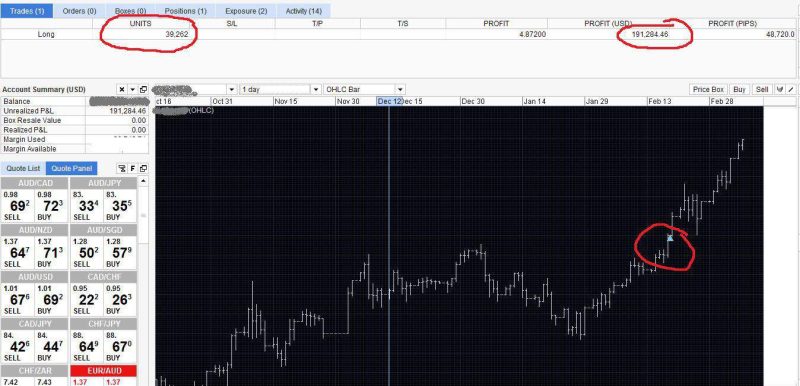
A portfolio of bonds that maturing on various dates is called a bond ladder. As a strategy, it’s implemented to generate profit by reducing the risk from fluctuations in interest rates.

Rather than purchasing bonds that will mature in the identical year, traders can buy bonds that mature at unsteady future dates. Expanding the dates of maturity prevents traders from attempting to time the market. Remaining committed and reinvesting the earnings from the bonds maturing enables traders to escape the turbulence caused by fluctuation in interest rates.
Also Read: What are The Best Bond Funds?
Contents
- Benefits of a Bond Ladder
- Implementing a Bond Ladder Strategy
- Creating a Bond Ladder
- Considerations for Bond Ladder
- Disadvantages of Using a Bond Ladder
- Conclusion
- FAQs
Benefits of a Bond Ladder
Investors that buy bonds typically do so from a conservative perspective to generate profit. Yet traders searching for substantial-quality, but not affecting the credit quality, will buy a bond with a longer maturity. But this will open the trader up to several risk types such as liquidity, credit, and interest rate risk.
If interest rates start rising, the opposite happens with bond prices. This is usually true with longer bond maturity dates. The price changes in a bond with a ten-year maturation are smaller than when you have a bond that matures in 40 years. For traders starving for cash before the bond’s maturity, the increase in interest rates results in reduced bond prices in the open market.
If interest rates rise, the demand reduces for smaller interest-paying bonds. Because of these, the bond has smaller liquidity, and bond purchasers will locate identical maturity bonds that have larger interest payments. The best option to get a more opportune price in this situation is to stay put and expect the decline in interest rates which results in bonds increasing their price.
Purchasing a significant position in one bond can expose a trader to credit risk .
Portfolio with only a single stock shares traits with a bond’s price that gets influenced by the credit of the underlying institution. The price will react negatively if something reduces the bond's credit quality.
For example, a certain state may offer popular bonds, but if in a few years financial issues start emerging then the prices will decline.
By using a bond ladder investors can balance these problems because the portfolio offers bonds with staggered maturity. And bonds mature constantly maturing and are reinvested in the present interest rate environment.
When traders require liquidity, selling the shorter maturity bonds will provide better pricing. By using various bond issues, the credit risk is diversified. If a bond faces a decline in credit quality, only a segment of the whole ladder will be affected.
Implementing a Bond Ladder Strategy
There are a couple of factors that contribute to utilizing a ladder approach.
For starters, by staggering the maturity dates investors are not forced to stay with a specific bond for a long duration. The most challenging thing about locking into a bond for the long haul is that there is no option to safeguard against bullish and bearish bond markets.
When a trader invests $100,000 in a bond with a $10 yield in 10 years, there is no possibility to profit from a rise or decline in interest rates.
For example, if interest rates decline five years after buying the bond, then the $100,000 gets capped with a low-interest rate.
With a bond ladder, investors balance market fluctuations, and the reason is that there is a bond maturing every year.
The other reason is the option to modify cash flows correspondingly to financial situations.
If we return to the $100,000 investment, there is an option to guarantee an income from the coupon payments by selecting another with different coupon dates. This is crucial for investors that are retired, and whose income depends on the investment's cash flows that way getting fixed-income security.
Traders that do not require an income, have access to liquid money with continuously maturing bonds.
Creating a Bond Ladder
The ladder is not a complicated creation, it's easy to picture a real ladder, and that analogy will correspond to the bond ladder strategy.
Rungs
Take the amount you want to invest and divide it by the number of years for which you wish to have a ladder. That way you will get several rungs for the ladder.
The larger the number of rungs means a more diversified portfolio and that way, you will be protected if a company defaults on its bond payments.
Height of the Ladder
The duration between the maturity of the bonds determines the distance between the rungs.
The range can be from a few months to years. The longer the ladder, the larger the returns because bond yields usually rise with time. Yet bigger returns get offset by the reinvestment risk.
By reducing the distance between the rungs you will decrease the ladder average return. However, there is improved money access.
Building Materials
Bond ladders can be formed from various materials.
The best option to minimize risk is investing in various companies. Investments in other assets and not only in bonds can be beneficial.
The ladder can be made with certificates of deposit and treasuries that offer various strengths and weaknesses. A crucial thing to keep in mind is that the asset that forms the ladder has to be redeemable by the bond issuer. This is the same as possessing a ladder with collapsible rungs.
Considerations for Bond Ladder
Investors that plan to start creating a bond ladder, must follow several guidelines.
Learn Your Limitations
Examine if you have sufficient assets to deploy across a range of bonds and still have suitable diversification in your portfolio. Because bonds get sold in small amounts, large funds are necessary to achieve diversification.
It may be required to have $500,000 if planning on investing in individual bonds that contain credit risk.
Allocate funds for emergencies and estimate if you have the time and expertise to manage a ladder. Maybe you would be more successful with a bond mutual funds.
Hold Bonds until Maturity
It's necessary to have patients ride out the fluctuations in the market. Keeping the bonds on the ladder until maturation will increase the benefits of risk management.
When an investor sells early, there is the possibility to lose earnings and incur fees for the transaction. Traders that are not able to keep bonds to maturity, can experience interest-rate risk.
Working with Quality Bonds
Ladders are used because they can generate profit over time that can be predicted, and implementing lower-quality bonds is not logical. Identify quality bonds, this is done with official ratings such as bonds rated “A” or higher.
Ratings can change, and the best option to tackle this problem is research that can offer confidence in the bond you are holding for a long time. When investing in corporate bonds, especially lower-quality then to diversify the ladder you need more issuers.
Stay Away from Highest-Yielding Bonds
High yield bonds frequently indicate the market is expecting a downgrade or sees that bond as riskier than other bonds that traded their price down and rises their yield. Municipal bonds are an exception because purchasers frequently pay a premium for bonds from creditworthy issuers with larger yields.
Remove Callable Bonds from the Ladder
The attraction of the ladder is the confidence investors will get paid interest after bonds mature and the amount you have to reinvest. If a bond is called before maturity, its interest payments will stop, and the principal gets returned at a time you may not have planned for.
Consider Time and Frequency
Another element of a ladder is the time length it covers and how frequently the bonds mature and return principal. Ladders with more bonds need more investment but offer a larger range of maturities. If an investor decides to reinvest, more opportunities emerge to get exposure to future interest rate environments.
Also Read: Block Trades
Disadvantages of Using a Bond Ladder
There are several advantages of implementing a bond ladder, but also cons that need to be examined before using the strategy. For starter traders may have to invest in lower interest rates concerning how interest rates stand during the expiration of the bonds you have.
This strategy aims to keep a reasonable amount of liquidity but liquidity is lost. If the trader requires money segments of the portfolio may have to be sold off. Rising interest rates signal a loss for the investor.
Bond laddering work with several transactions. The fees can easily accumulate if the transactions get performed through a broker, creating more expanse for the investor.
Conclusion
A bond ladder consists of fixed-income securities investment portfolio where every asset has a different date of maturity. Bond ladder maturity dates are equally spaced over a few months or years that way the profits get regularly reinvested as the bonds mature.
The goal of buying smaller bonds with different maturity dates rather than a single big bond with one maturity date is to reduce interest-rate risk, diversify credit risk and improve liquidity.
Investors that create an exchange-traded funds bond ladder, have to place the same amount of money in different ETFs with different maturity dates.
Investors that have limited funds, which are necessary to diversify a portfolio should not build a bond ladder. To start, a ladder with a minimum of five rungs requires funds amounting to $10,000. Without this amount, buying products like bond funds may not be appropriate. Charges for the product can get balanced by the benefits of diversification.
This is not an investment that is started without a backup plan, that way investors can reduce risk exposure and create an opportunity to profit from altering market conditions.
FAQs
Is a bond ladder a good idea?
With a bond ladder, investors balance market fluctuations because they have a bond maturing every year. The other reason for building a bond ladder is that it offers traders the option to modify cash flow according to their financial situation.
Is a bond ladder better than a bond fund?
In the bond market, working with bond funds provides better control and improved liquidity.
Are bond ladders safe?
Bond ladders should not be undertaken by trades that do not have sufficient funds to manage emergencies. With a diversified bond ladder, there are no guarantee traders will avoid losses.

















